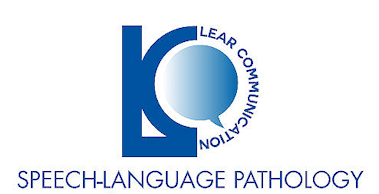Dysfluency (Stuttering) - Adults
Fluency in speech isn’t always perfect – even radio personalities experience hesitations in their speech! However, some people experience more or different types of dysfluencies than others.
Facts about Stuttering:
- Approximately 1% of the adult population stutters.
- Stuttering is more common in men, with a ratio of 4:1 compared to women.
- Many individuals who stutter have average or advanced language skills.
The exact cause of stuttering is unknown. Speech production is an extremely complex physical-neurological-psychological process. A very slight physical variation in the activity of the brain can interfere with the rapid coordinated movements of the vocal cords, tongue and lips, creating what we call stuttering. Stress can certainly make stuttering worse.
Signs of Dysfluency (Stuttering)
Adults who experience dysfluency may display the following:
- Word repetitions (e.g., “my my my”)
- Sound repetitions (e.g., “m-m-m-my”)
- Prolongations (e.g., “mmmy”)
- Blocks (when air is “stuck” before being released, e.g., “m………y”)
If these behaviors persist or worsen, it may be a good idea to consult a speech-language professional for guidance.
Speech-language pathologists (SLPs) evaluate an individual’s speech fluency through various tasks, such as conversation, reading aloud, describing pictures, or reciting the days of the week. These activities help them identify the types of dysfluencies an individual experiences. Based on this assessment, they introduce a range of fluency-enhancing strategies to improve speech. Each strategy is thoroughly explained, practiced in structured therapy activities, and then applied to real-life communication situations.
Cluttering vs. Stuttering
Cluttering is a speech disorder characterized by an unusually fast and irregular rate of speech, or a combination of both. It involves difficulties with maintaining normal sound, syllable, phrase, and pausing patterns, and may include an increased occurrence of dysfluencies, which differ from those seen in stuttering (The ASHA Leader, November 18, 2003).
Although often confused with stuttering, cluttering is a distinct fluency disorder. Cluttering is typically assessed by a Speech-Language Pathologist, often with input from teachers or psychologists. Treatment is usually effective and may include strategies to slow speech rate, increase awareness of speech patterns, improve sound precision, enhance speech organization, and reduce excessive dysfluencies.
While the two conditions can co-occur, they have key differences:
|
CLUTTERING |
STUTTERING |
| Dysfluencies often include unfinished words, interjections, and revisions. | Dysfluencies typically involve repetitions of sounds, syllables, or words, prolongations of sounds, and blocks. |
| Individuals may have low awareness of their dysfluencies. | Individuals are typically highly aware of their dysfluencies. |
| There are few secondary behaviors (e.g., facial tics or body movements). | Secondary behaviors, such as eye blinking or nostril flaring, are common. |
| Speech may be disorganized and contain grammatical errors. | Speech is generally well-organized, though fear and anxiety may limit expression. |
| Often involves difficulties with reading and writing. | May be accompanied by strengths in language arts. |
Self-Directed Techniques
Stuttering is a complex issue, and professional support is often necessary for effective change. However, here are some general tips to help:
✅ Take a deep breath before speaking.
✅ Slow down your speech and reduce your rate of talking.
✅ Visualize yourself speaking fluently.
✅ Practice for important meetings and presentations.
For personalized guidance tailored to your specific needs, consult a speech-language pathologist.




